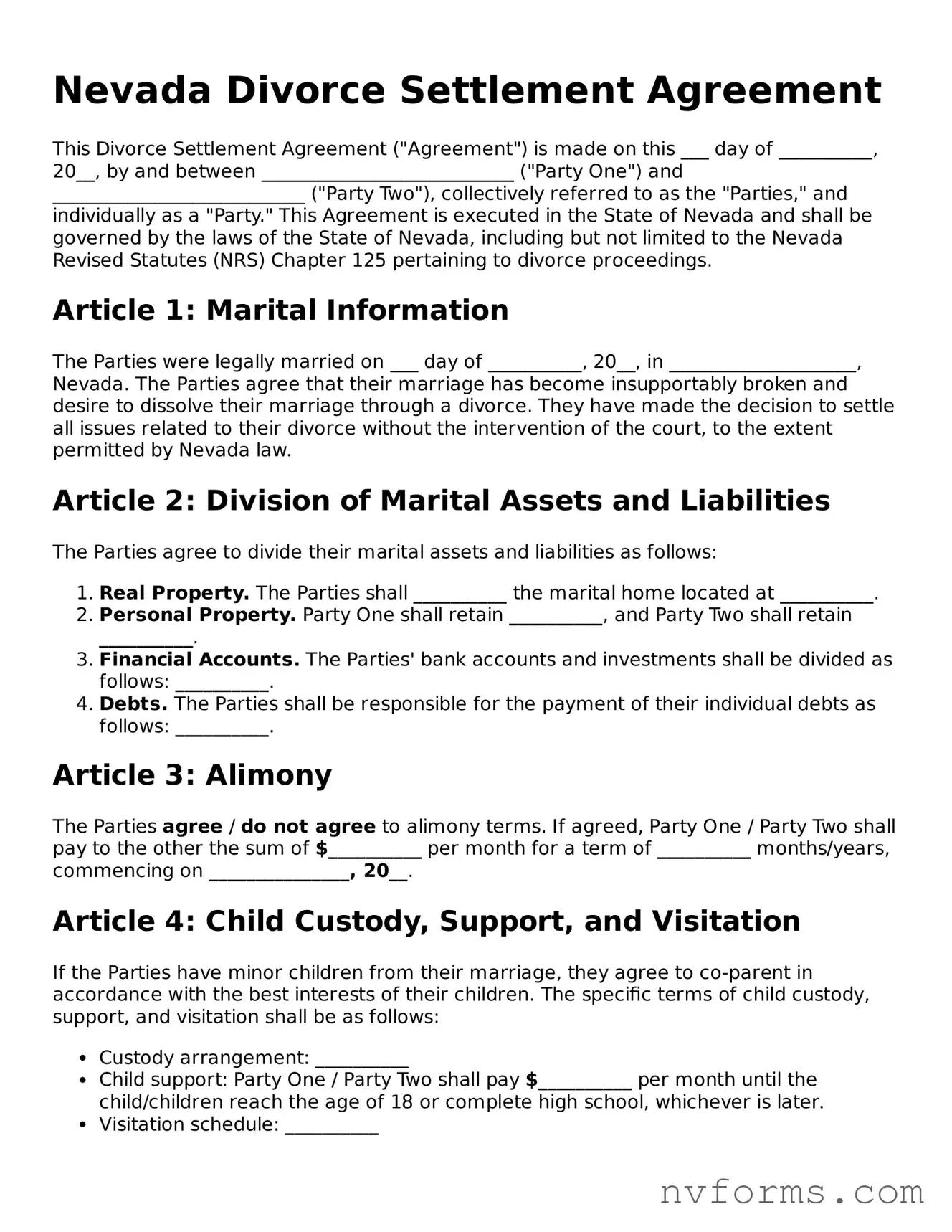Nevada Divorce Settlement Agreement
This Divorce Settlement Agreement ("Agreement") is made on this ___ day of __________, 20__, by and between ___________________________ ("Party One") and ___________________________ ("Party Two"), collectively referred to as the "Parties," and individually as a "Party." This Agreement is executed in the State of Nevada and shall be governed by the laws of the State of Nevada, including but not limited to the Nevada Revised Statutes (NRS) Chapter 125 pertaining to divorce proceedings.
Article 1: Marital Information
The Parties were legally married on ___ day of __________, 20__, in ____________________, Nevada. The Parties agree that their marriage has become insupportably broken and desire to dissolve their marriage through a divorce. They have made the decision to settle all issues related to their divorce without the intervention of the court, to the extent permitted by Nevada law.
Article 2: Division of Marital Assets and Liabilities
The Parties agree to divide their marital assets and liabilities as follows:
- Real Property. The Parties shall __________ the marital home located at __________.
- Personal Property. Party One shall retain __________, and Party Two shall retain __________.
- Financial Accounts. The Parties' bank accounts and investments shall be divided as follows: __________.
- Debts. The Parties shall be responsible for the payment of their individual debts as follows: __________.
Article 3: Alimony
The Parties agree / do not agree to alimony terms. If agreed, Party One / Party Two shall pay to the other the sum of $__________ per month for a term of __________ months/years, commencing on _______________, 20__.
Article 4: Child Custody, Support, and Visitation
If the Parties have minor children from their marriage, they agree to co-parent in accordance with the best interests of their children. The specific terms of child custody, support, and visitation shall be as follows:
- Custody arrangement: __________
- Child support: Party One / Party Two shall pay $__________ per month until the child/children reach the age of 18 or complete high school, whichever is later.
- Visitation schedule: __________
Article 5: Miscellaneous
Both Parties agree that they have made a full and accurate disclosure of their financial situations and agree to execute any documents necessary to effectuate the terms of this Agreement. This Agreement represents the entire understanding between the Parties and may only be amended in writing with the consent of both Parties.
This Agreement is executed voluntarily by the Parties with a full understanding of its significance and legal effect. IN WITNESS WHEREOF, the Parties have executed this Agreement on the dates written below.
Party One's Signature: ___________________________
Date: _________________
Party Two's Signature: ___________________________
Date: _________________
